Western Cattle-Egrets in a Farm Field
A rather uncommon bird in Arizona
Among the heron and egret group of birds in Arizona, we more commonly see Great Egrets, Snowy Egrets, Great Blue Herons, Green Herons, and Black-crowned Night Herons. Western Cattle-Egrets are uncommon here but their numbers do peak during the summers. Smaller than most other egrets, Cattle Egrets are found in agricultural fields, pastures and open country rather than wetlands. A friend and I recently came across a group of over twenty while driving through farmland in Pinal County.
Cattle Egrets are white but during the summer breeding season they develop golden plumes on their heads, chest and back. Their black legs turn yellow at this time of year. Cattle Egrets are smaller and more compact than Great Egrets and Snowy Egrets but they have the same dagger-like bill. Cattle Egrets also have shorter and thicker necks than their more common cousins. They are more gregarious than other herons and egrets and may be in flocks year-round.
From AllAboutBirds, "Western Cattle-Egrets are native to Africa but somehow reached northeastern South America in 1877. They continued to spread, arriving in the United States in 1941 and nesting there by 1953. In the next 50 years, they became one of the most abundant of the North American Herons."
Cattle Egrets get their common name from their behavior of following large animals to eat the insects that these animals stir up from the ground. Around the world, they have names that reflect the local grazing animals they associate with. From AllAboutBirds, "In various languages they are known as cow cranes, cow herons, cow birds, elephant birds, rhinoceros egrets, and hippopotamus egrets." Birdnote tells us about their feeding behavior.
Cattle Egrets have a wingspan of about three feet. Although they forage in fields for insects, they can catch insects in the air as well
We watched the Cattle Egrets for about a half hour as they foraged in the alfalfa field. The birds would walk back and forth across the field. Every once in a while a bird would take off and fly either to the east or to the south, in search of a better field. It was a treat to see these different birds in such great numbers.
Western Cattle-Egrets received their new name in 2024. Until then they were just known as “Cattle Egrets”. For an explanation of how this happened, see this story by the International Bird Rescue organization.


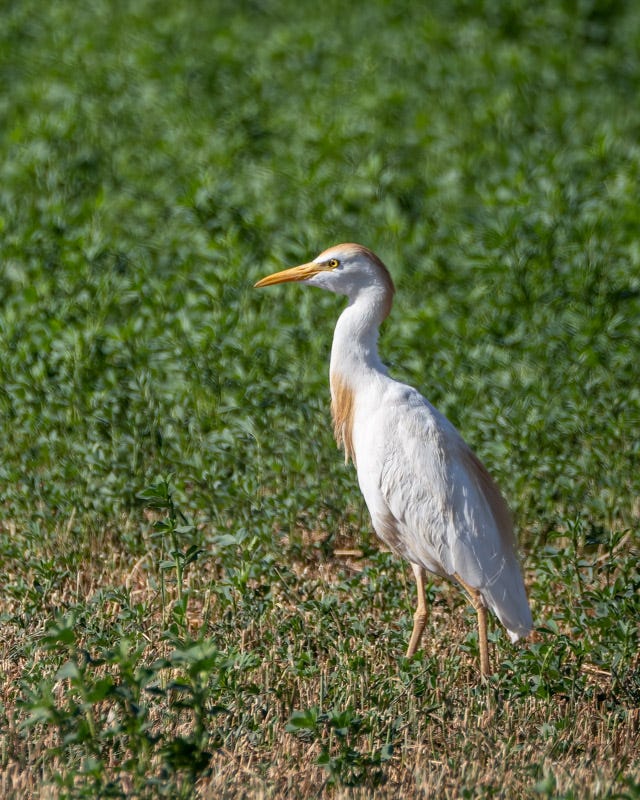
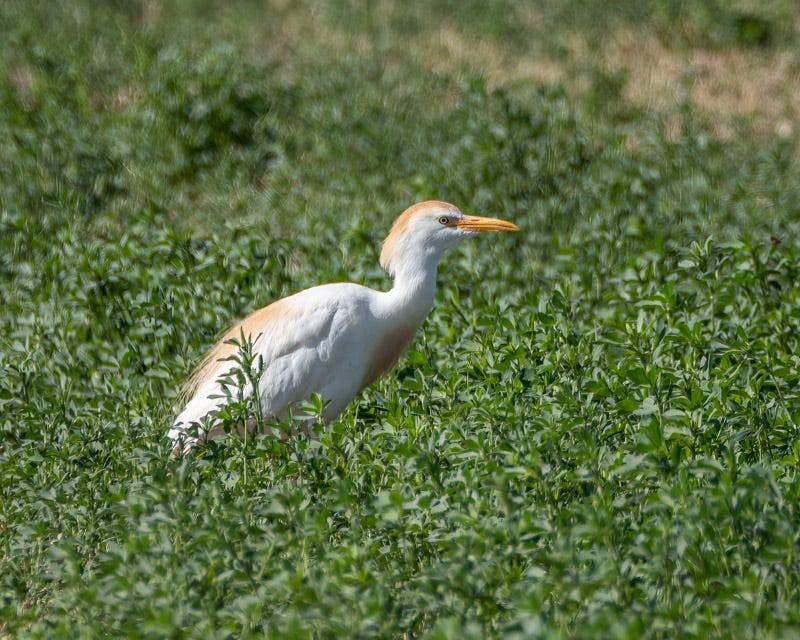
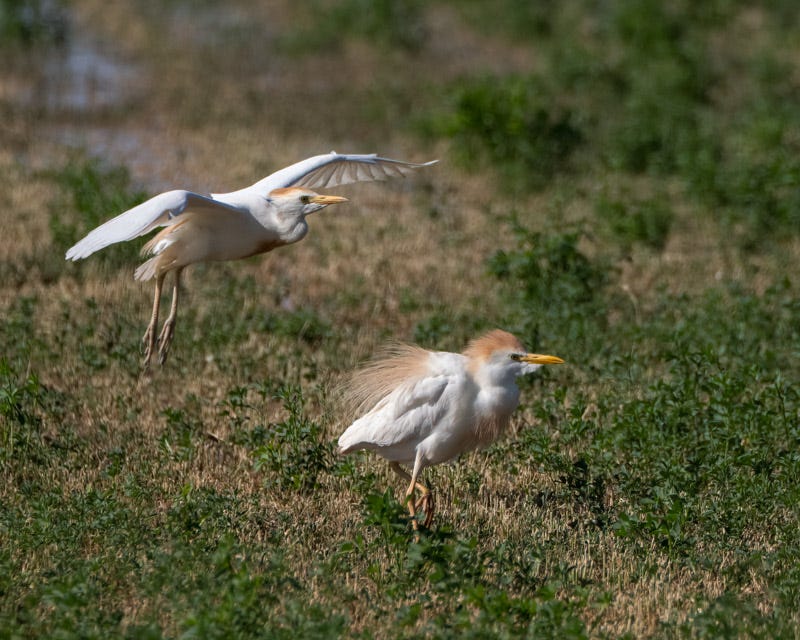
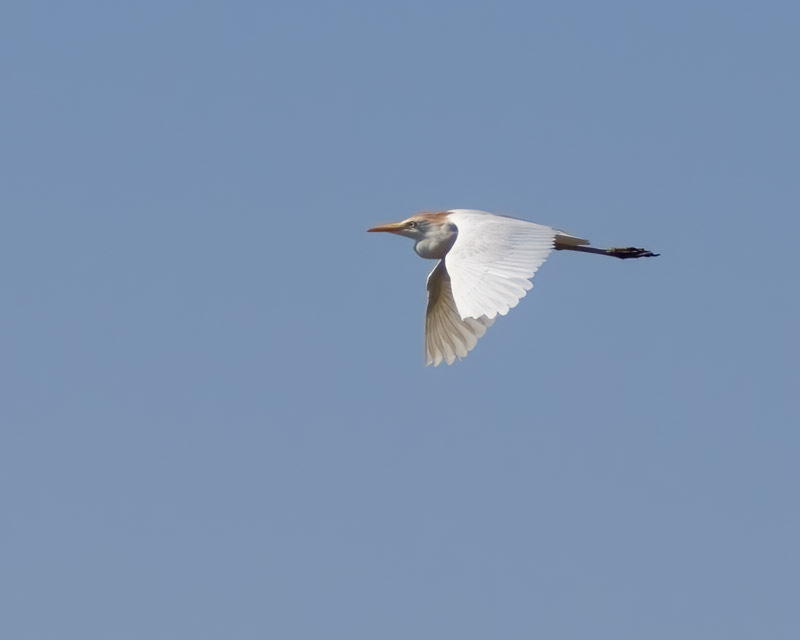
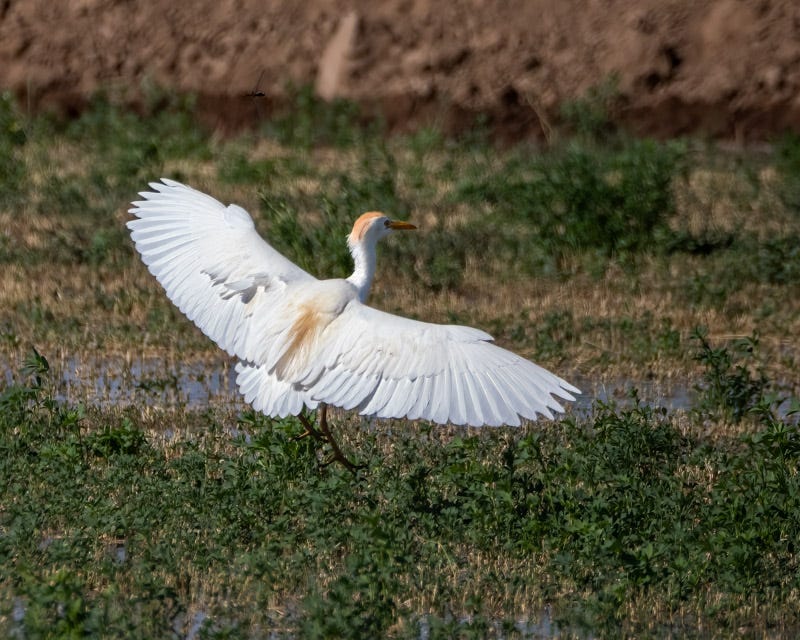
Beautiful photos and very interesting information about their spread to the Americas and their new name. Thanks!
Great find and series well photographed.